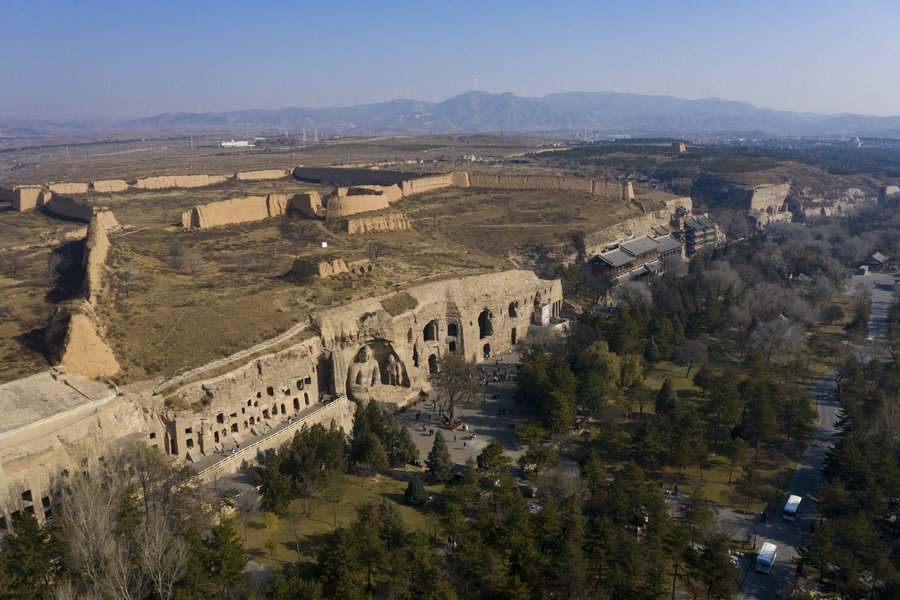
A bird's-eye view of the UNESCO World Cultural Heritage Site, which consists of 252 caves and 59,000 statues, representing an outstanding achievement of Buddhist cave art in China in the 5th and 6th centuries. ZHAN YAN/YANG CHENGUANG/XINHUA
Carved into the cliffs of Wuzhou Mountain in the northwestern suburbs of Datong, Shanxi province, over 1,500 years ago, the Yungang Grottoes stand as a monumental testament to cultural exchanges between China and the Buddhist world. Added to the UNESCO World Cultural Heritage List in 2001, the organization said in a document that the site has a universal value as it represents "the outstanding achievements of Buddhist cave art in China".
Today, it is not only preserved as a history book etched in rock but has also been revitalized through cutting-edge technology and innovative cultural initiatives. In recent years, local authorities have intensified efforts to protect and study the grottoes, elevating conservation standards and deepening research into their historical legacy.
Established in 2021, the Yungang Grottoes Academy spearheads these efforts, and follows to a conservation-first principle.
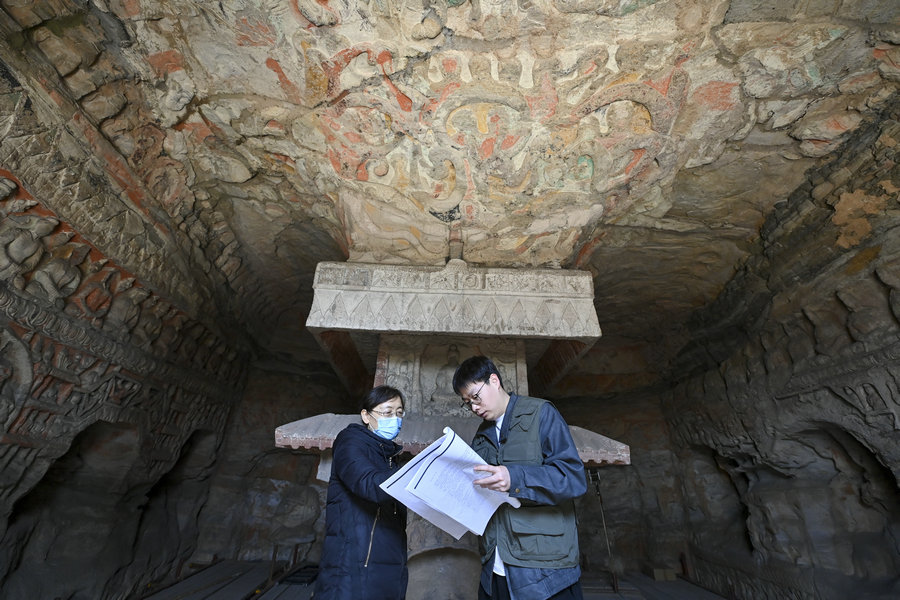
Researchers conduct a survey at the Yungang Grottoes. ZHAN YAN/YANG CHENGUANG/XINHUA
Teams of cultural relic conservators from the academy carefully examine the caves, diagnosing ailments like weathering, erosion and pigment degradation, and apply tailored remedies, from stone reinforcement to mural restoration.
Of the site's 45 major caves and 59,000 statues, about 80 percent have been digitally archived to millimeter precision, creating backups that allow for ultra-accurate repairs if damage occurs, according to the institute.
Advanced technology has unlocked new possibilities for the grottoes' legacy. High-resolution scans and artificial intelligence-powered reconstructions empower virtual tours, while 3D printed replicas allow fragile artworks to "travel" globally.
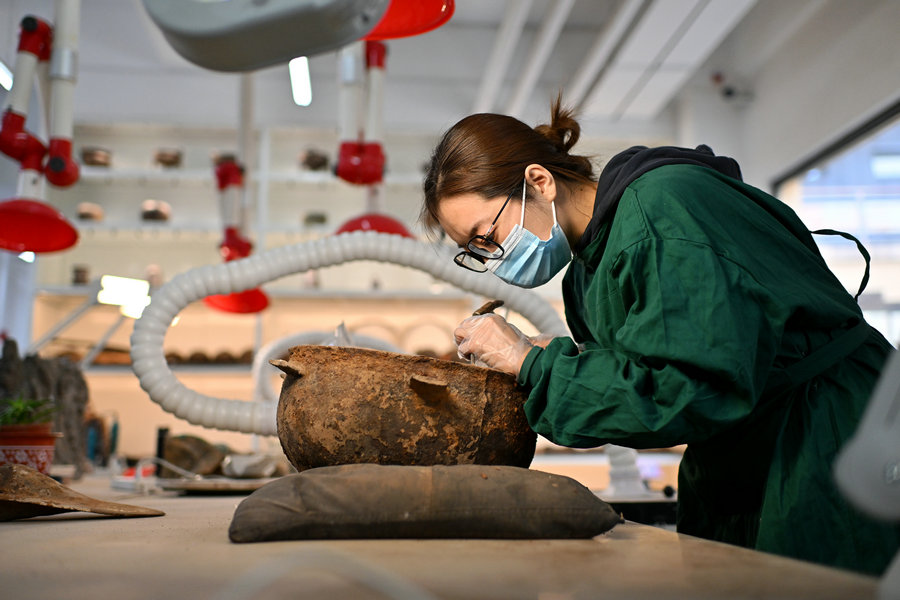
In the relic conservation lab, a worker restores an iron object. ZHAN YAN/YANG CHENGUANG/XINHUA
Beyond preservation, the institute fosters global academic collaboration, partnering with universities to decode the site's multicultural roots.
Meanwhile, the site's tourism infrastructure has been upgraded, with 4.44 million visitors welcomed last year, according to official statistics. Interactive exhibits, student travel programs, and creative cultural products engage younger audiences.
According to the latest official statistics, during the five-day May Day holiday, the Yungang Grottoes received more than 220,000 visits, an increase of 8.96 percent compared to the same period last year.
From the hands of 5th-century artisans to today's digital guardians, the Yungang Grottoes continue to inspire, proving that even ancient stone can spark modern brilliance.
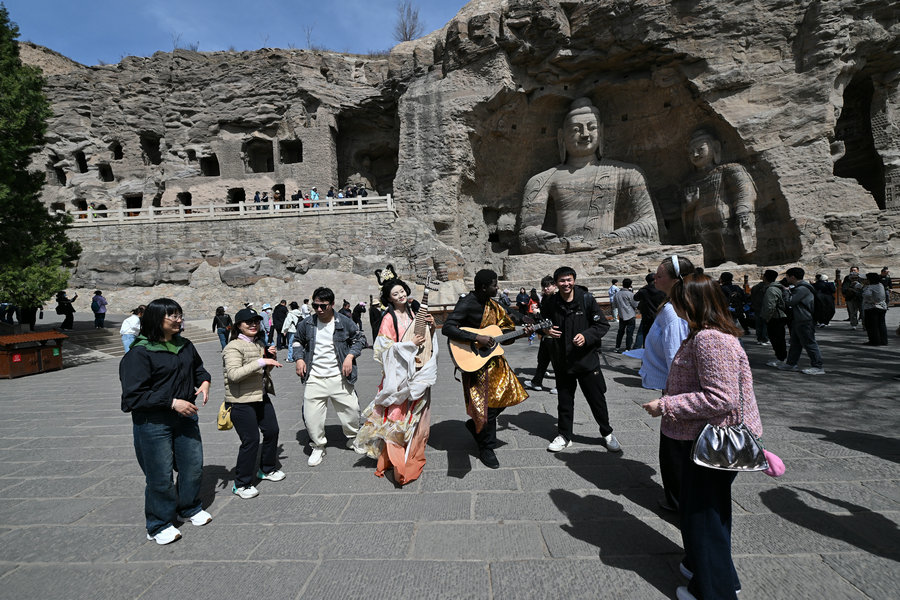
Tourists dance to the guitar and pipa, a four-stringed instrument, at the Yungang Grottoes. ZHAN YAN/YANG CHENGUANG/XINHUA
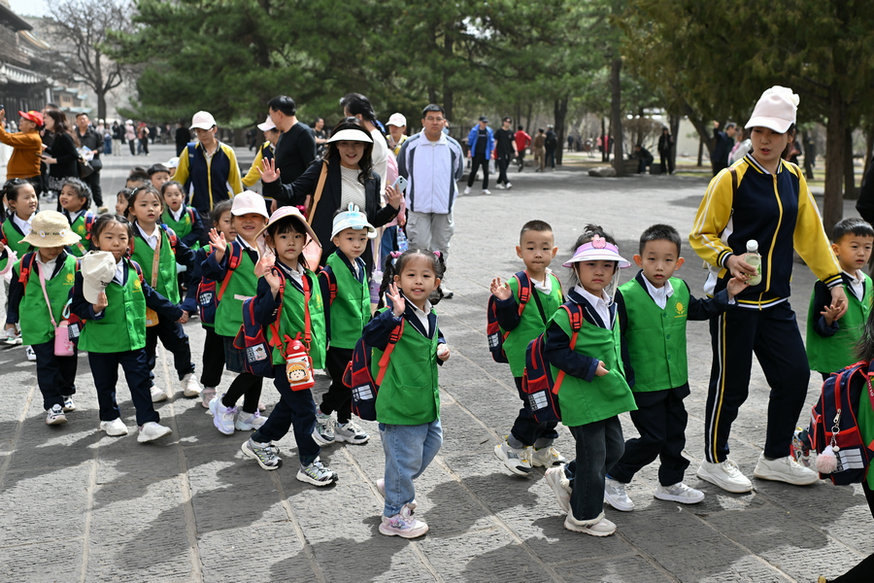
Under the guidance of their teachers, children greet the photographer as they visit the Yungang Grottoes. ZHAN YAN/YANG CHENGUANG/XINHUA
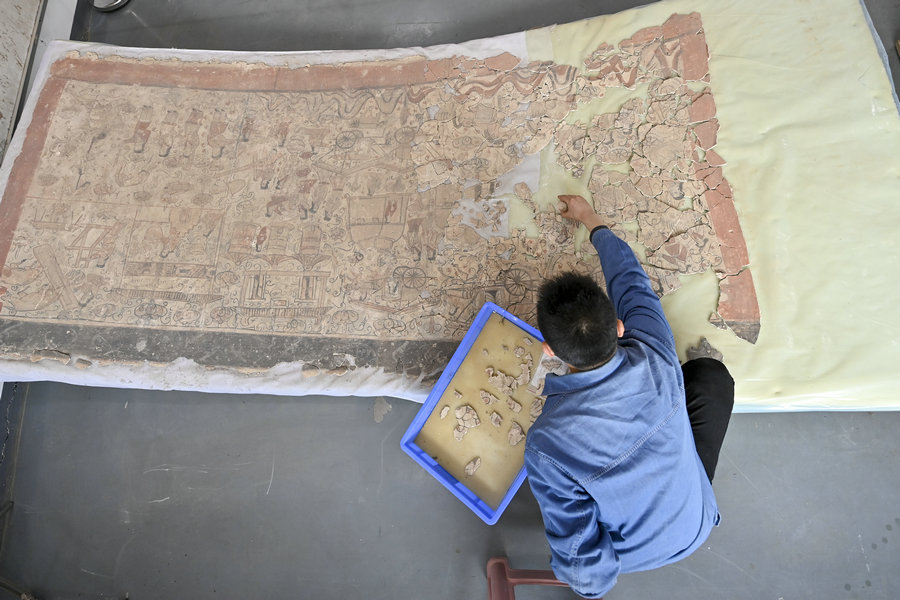
Mural restoration at the Yungang Grottoes in Datong, Shanxi province. ZHAN YAN/YANG CHENGUANG/XINHUA
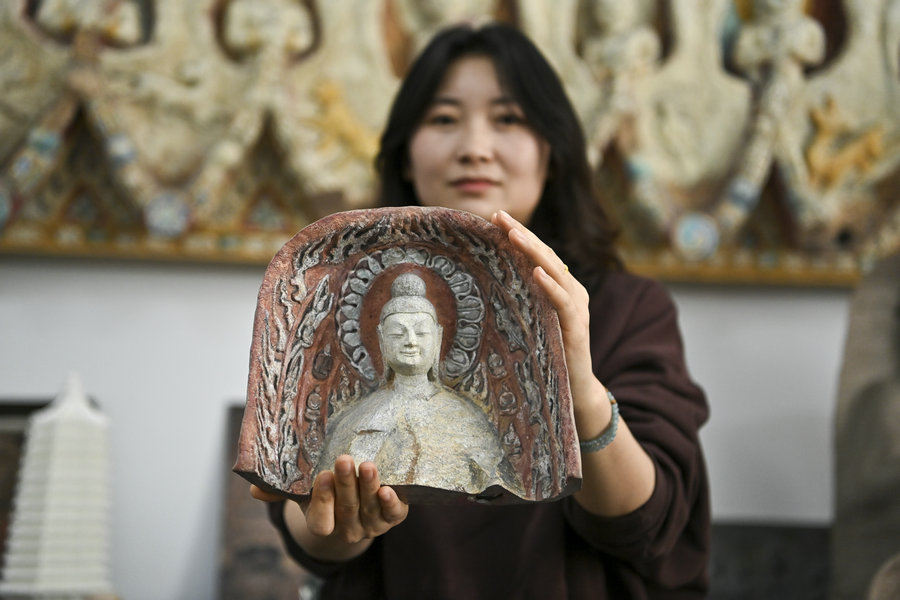
At the digitization and protection lab in the Yungang Grottoes Academy, a researcher shows a 3D printed sculpture replica. ZHAN YAN/YANG CHENGUANG/XINHUA
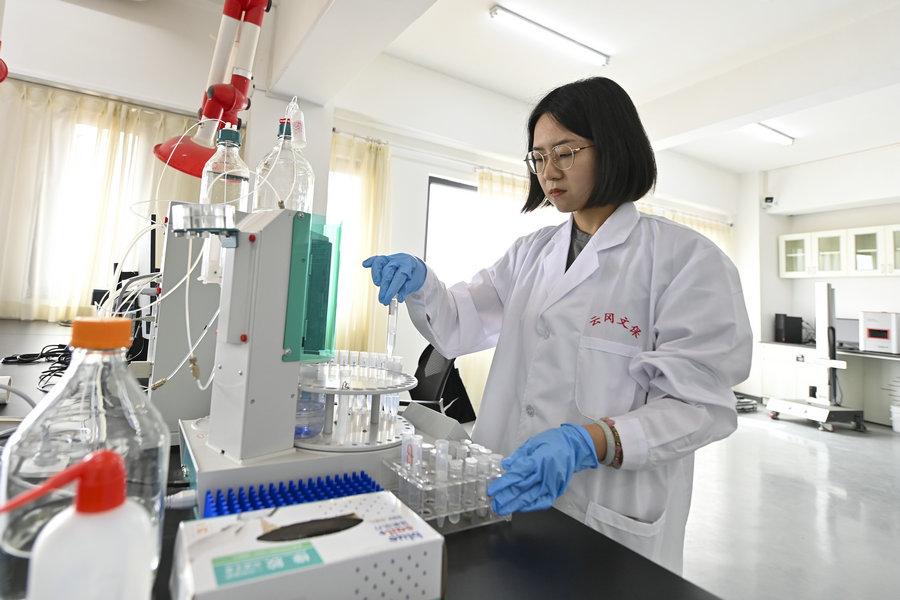
A researcher tests samples from the cave to identify the materials and their reactions to different cleaning solutions. ZHAN YAN/YANG CHENGUANG/XINHUA
 Editor:Qiu Xiaochen
Editor:Qiu Xiaochen